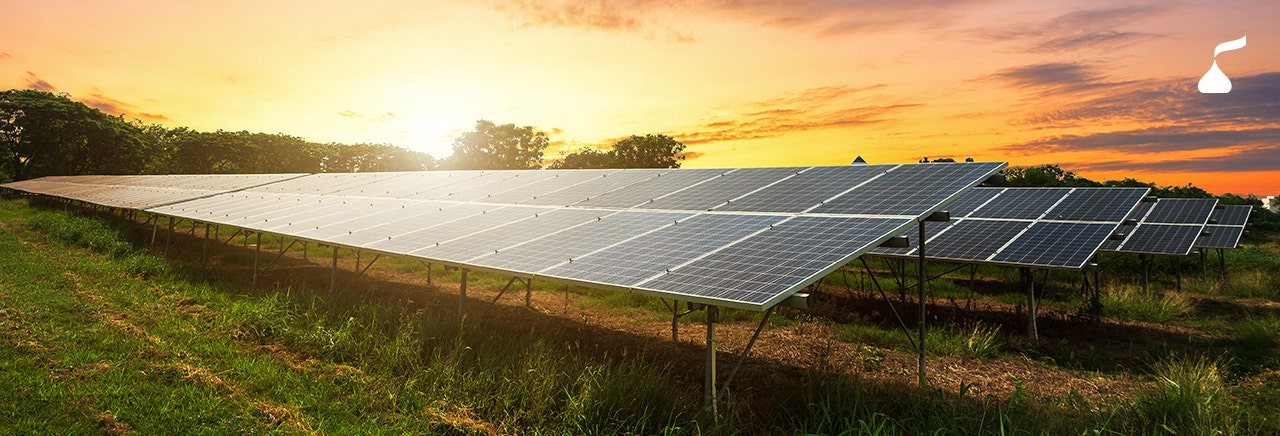From Nuts to Clean Energy: Buying Renewable Energy is Just Another Way to Bring Goodness to the World
Over the past 14 years, I have spent much of my career focused on nut research and purchasing. For more than five years, I have been responsible for Hershey’s procurement of peanuts and almonds. Before that, I worked in R&D as Hershey’s nut technical expert and on chocolate innovation projects.
In 2017, I was given the opportunity to expand my responsibilities and become Hershey’s energy buyer, securing the company’s energy needs for electricity, natural gas, diesel, water and renewable energy. It has been an honor to lead our renewable energy efforts as part of a broader commitment to reduce greenhouse gas emissions and lessen our environmental impact. The transition from nut sourcing to energy procurement might seem like a stretch, but in practice, our environmental footprint has an influence on the ingredients we rely on every day to bring our portfolio of iconic snacks to market. Drought conditions and other weather anomalies can impact quality, flavor and supply of our key ingredients, making environmental sustainability core to not only delivering on our purpose and future proofing our business, but also to meeting the expectations of our consumers and upholding our product quality standards.
I’m excited about Hershey’s April 2021 announcement that we signed two new renewable energy agreements designed to help us achieve our 2030 goal to reduce Scope 1 and 2 emissions by more than 50 percent. These solar projects in Camden, North Carolina and Denton, Texas will create local jobs and generate significant power for these communities, offset carbon emissions and increase Hershey’s ability to rely on clean and renewable energy.
In Camden, North Carolina, we partnered with global renewable energy developer BayWa r.e. to fund construction of Hershey’s first utility-scale solar farm on 218 acres, generating 20 megawatts (MW-AC) or 45,190 megawatt hours annually. The project will reduce CO2 emissions by 32,025 metric tons per year, the equivalent of emissions incurred from driving more than 80 million miles in the average passenger car or charging nearly 3.9 billion smartphones.*
In Denton, Texas, we have signed a new power purchase agreement with National Grid Renewables for the construction of the Noble Solar Project, which will generate 275 MW-AC or 650,000 megawatt hours annually, of which Hershey is contracting for 50 MW or 118,000 megawatt hours per year, reducing 83,625 metric tons of CO2 emissions annually.* Hershey’s offtake will create a CO2 reduction equivalent to driving another 210 million miles in the average passenger car or charging more than 10 billion smartphones. We will be one of several companies helping get this project off the ground.
Demand for renewable energy has gained significant momentum in recent years. Renewable developers quickly find off-takers who are eager to sign contracts and the landscape changes fast. Without much experience in the renewable field, we could have shied away from these investments, but we recognized the importance of wind and solar power in helping us achieve our Science Based Targets. We worked closely with our consultant Edison Energy to understand our options, find the right partners and finalize agreements for these projects. We are hopeful about the role of renewable energy solutions in reducing our impact on the environment, conserving natural resources and protecting the farmers and communities we rely on.
In 1921, the Hershey Power Plant was first completed on the northeast corner of the company’s chocolate factory in Hershey, PA. One hundred years later the building no longer produces power, but the twin smokestacks emblazoned with the “Hershey” name remain the town’s most iconic landmark and are symbolic of Milton Hershey’s legacy and regard for the community.
Our new renewable energy projects look different than our original power plant, but they still represent Milton Hershey’s legacy and regard for our communities. By setting aggressive goals, investing in innovative solutions and measuring our impact, Hershey aims to leave a healthier, safer planet for future generations to enjoy more moments of goodness.
Consider how you can reduce your own emissions footprint. Small actions add up over time. Consume less energy by turning off lights and appliances when not in use. Shop for energy and water efficient appliances. Walk or ride a bike in lieu of driving. If possible, considering sourcing electricity from renewable or zero-emission sources. We can all play a role in preserving natural resources and protecting the planet.
*Calculated using the United States Environmental Protection Agency’s (EPA) greenhouse gas equivalencies calculator. This calculator uses marginal emissions rates.
![]()
